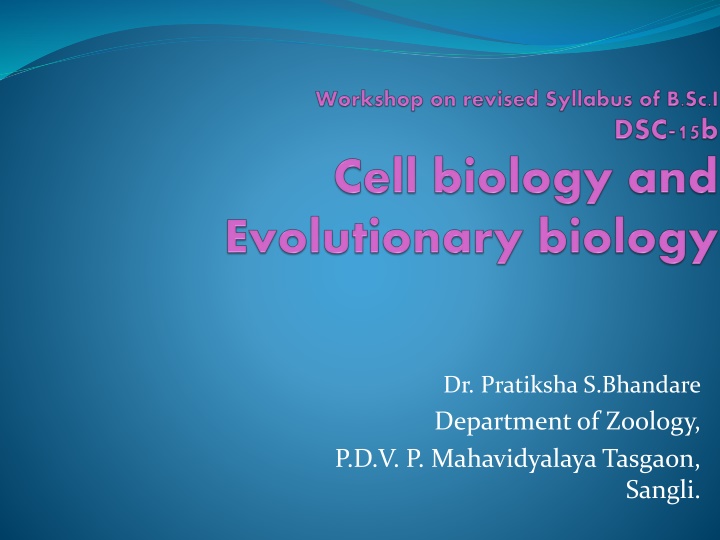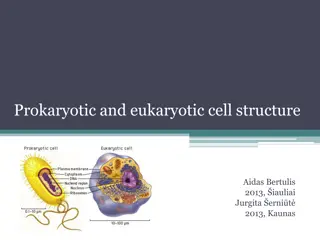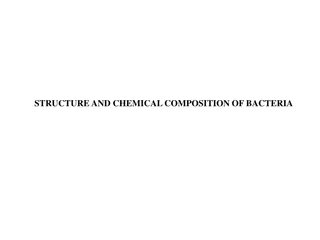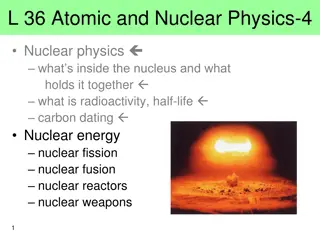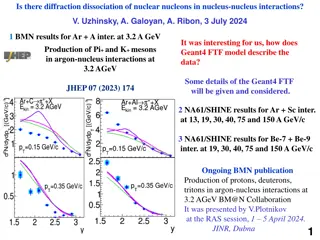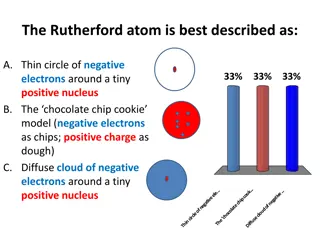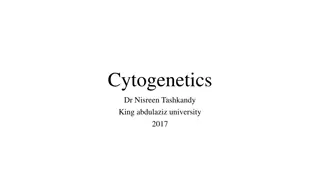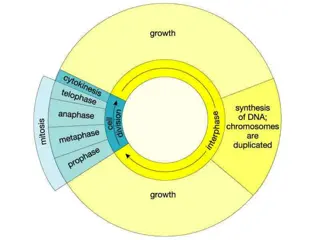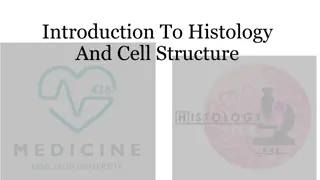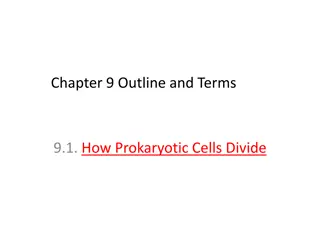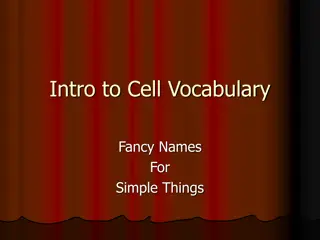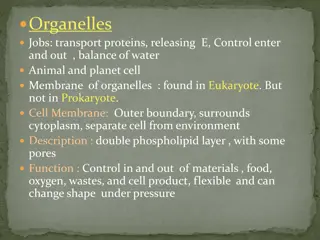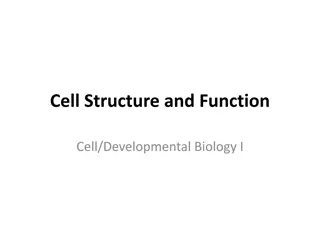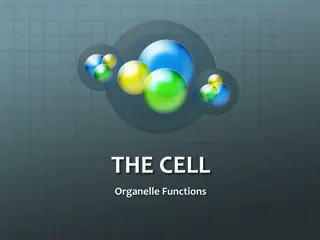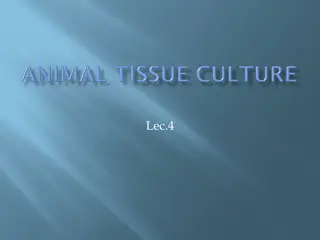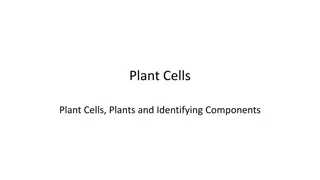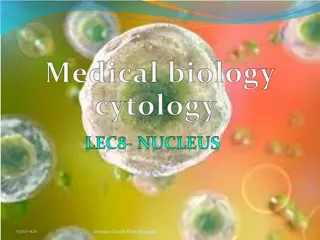Cell Structure and Nucleus Organization
In this detailed study, explore the structure of cells, nucleus, chromatin, and chromosomes along with their diverse shapes and sizes. Understand the composition of the plasma membrane and its functions in cell biology.
Download Presentation

Please find below an Image/Link to download the presentation.
The content on the website is provided AS IS for your information and personal use only. It may not be sold, licensed, or shared on other websites without obtaining consent from the author.If you encounter any issues during the download, it is possible that the publisher has removed the file from their server.
You are allowed to download the files provided on this website for personal or commercial use, subject to the condition that they are used lawfully. All files are the property of their respective owners.
The content on the website is provided AS IS for your information and personal use only. It may not be sold, licensed, or shared on other websites without obtaining consent from the author.
E N D
Presentation Transcript
Dr. Pratiksha S.Bhandare Department of Zoology, P.D.V. P. Mahavidyalaya Tasgaon, Sangli.
Cell structure Cell theory and diversity in cell size and shape Cell Theory Observations of T.S.Schwann Observations of M.J. Schleiden Studies of Virchow and others Postulates of cell theory Diversity in Cell size and shape Smallest and largest cell. Longest cell Various shapes of cells
Structure of nucleus Nucleus with reference to Nuclear membrane, Nucleoplasm, Chromatin and nucleolus. Introduction: Importance, Discoverer, Various Shapes etc. Nuclear Envelope Structure: Outer membrane, Inner membrane, Perinuclear space, Lamins. NPC (Structure, Transport through NPC). Functions of Nuclear envelope Nucleoplasm Major Components Chromosome Territories Functions
Structure of nucleus Chromatin Srtucture Euchromatin Heterichromatin Constitutive Facultative Nucleolus Structure : 3regions Functions: rRNA synthesis, rRNA processing, Ribosome assembly Functions of Nucleus
Structure of Chromosome With reference to Morphology and organization (Nucleosome), Polytene Chromosomes
Structure of Chromosome Packaging of DNA Nucleosome Beads on string Zic Zac arrangement Solenoid Chromatin Fibres Chromonemaand Chromomeres Stages of DNA packaging with respect to cell cycle. Structure of Metaphasic chromosome Chromatids Centromereand kinetochore Telomeres Secondary constriction Satellite Types of chromosomes based on position of centromere
Polytene chromosome Introduction Endomitosis Somatic Pairing Structure Importance
Plasma Membrane Fluid Mosaic model: Postulates Lipids of plasma membrane Proteins of plasma membrane Functions Transport Passive transport Facilitated transport Active transport Receptors Antigen specificity Impulse transmission Barrier Cell division Cell fusion Conjugation Endocytosis Exocytosis
mitochondria Structure Functions Power house Synthesis of acetyl Co A from Pyruvate oxidation Kreb s cycle Electron transfer and Oxidative phosphorylation ATP transport Synthesis of Urea Synthesis of some Amino acids Role in apoptosis ROS formation Study of maternal lineage Biomarkers of cancer Shape Size Distribution Outer membrane Inner membrane Outer chamber Inner chamber: matrix
Endoplasmic reticulum Structure Functions Components Mechanical support Functions of RER Cisternae Tubules Post translational modifications Vesicles Types Protein folding N-glycosylation Protein sorting Functions of SER Rough ER Smooth ER Chemical composition Lipid biosynthesis Lipid transport Lipids Detoxification and bio-activation Proteins of RER Glycogenolysis and gluconeogenesis Ca++ sequestering Proteins of SER
Golgi Complex Structure Functions Discoverer Three structurel components Cisternae Secretion Continuous Discontinuous Protein sorting Lysosome formation Role in Fertilization O-Glycosylation Sphingomyelin synthesis Polysaccharide synthesis Membrane recycling Role in cell plate formation. Structure Polarization GERL region Tubules and Vesicles Tubles Four types of vesicles Transitional Secretary Retrival Clathrin coated Large vacuoles
lysosomes Structure Functions Dimentions Lysosomal membrane Intracellular digestion Autophagy and cellular turn over Role in fertilization Apoptosis Extracellular digestion Role in body defence Cleaning the cell debris Secretion of hormones in thyroid Proton pump Protection of the membrane Hydrolytic enzymes Polymorphism Primary lysosomes Heterophagosome Autophagosome Residual body
History Of life: Major events in the history of life Structure of Cosmos Primitive Earth Prebiotic synthesis Primitive atmosphere Primitive biomolecules Energy source Absence of Oxygen Primitive sea Evolution of Progenote: Precellular evolution RNA world Ribonucleoprotein (RNP) World Origin of Plasma membrane DNA world Progenotes Prokaryotes ,Urkaryotes, Single celled eukaryotes Heterotrophs , Autotrophs Multicellularity
Introduction to evolutionary theories Lamarkism: Inheritance of acquired characters About Lamark Lamark s Theory of evolution Examples Critics and demerits Significance Darwinism: Theory of Natural selection About Darwin and his observations Theory Critics and demerits Neo-Darwinism What is Neo-Darwinism? Maturation into Modern Synthesis Five basic processes: Mutations, Variations, Heredity, Natural Selection, Isolation
Direct evidences of evolution; Fossils Definition Importance of fossils Process of formation of fossils Nature of fossils Unaltered fossils Altered Fossils Types of Fossils Entire organism Original hard part of Invertebrate Skeletons preserved Altered hard part Traces of organisms Dating Imperfection of fossil record Problems in excavation Problems of fossilisation Natural destructions
Extinctions Mass Extinctions End Ordovician: 444million yrs ago Late Devinian: 375 million yrs ago End Permian: 251 million yrs ago End Triassic: 200 million yrs ago End cretaceous : 66 million yrs ago Causes K-T extinction: cretaceous-tertiary extinction Introduction Pattern Evidence Causes Role of extinction in evolution
